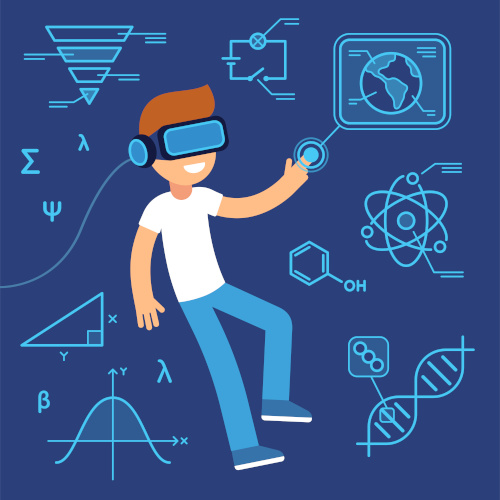“When will I ever use this?”
Math students have been asking educators this very question for decades. And yet, it has long been reported by Brookings (Loveless, 2008) and others like the Algebra Project (Moses, 2001) that Algebra I is the gatekeeper to higher level math classes, higher education success, and careers in the technical fields. It is a commonly-held belief that algebraic concepts are directly related to critical thinking skills. So, what is the disconnect?
We have hovered our proverbial mouse over the 21st century now for two decades. Yet, our education system and structure had shown little to no trace of modernization. Bells rang, people moved. An agrarian calendar is used to let our students “off” for the summer to help with…wait, for what?
Disruption
Enter stage left, a worldwide pandemic. Our educators have been upskilled, the resources and environment have been retooled, and the technology-assisted curriculum has been modernized.
And while the staff, students, and families are stressed as we continue to deal with the impacts of the pandemic, visionary leaders have the chance to be the architects of what post-pandemic education should look, sound, and feel like.
Asking students, “What do you want to be when you grow up?” is no longer an adequate question to address the future of our students. Students must have a Future Self Vision. Regardless of their circumstances, they should be able to see themselves in the future. What quality of life do they envision for themselves and their families?
With a Future Self Vision, students have purpose and hope. It is the job of our education leaders to build an education system that allows all students the opportunity to develop their Future Self Vision.
Vital lesson learned
Technology-assisted or technology-enhanced curriculum has been available pre-pandemic, but the use of the technology to allow more students to access high-quality instructional materials has only intensified over the last twenty months. And just when screen time has hit an all time high, the immersion of students in virtual reality (VR) enhanced lessons in schools or at home allows for the application of real-world learning to finally answer the question, “When will I ever use this?”
The top indicators of success in post-secondary STEM fields are the ability to rotate 3D objects in your mind, maintain perspective of that object, and the ability to abstract up from real-life experiences. Most existing tools automate static memorization, leaving students with no understanding of what they have learned or the ability to apply the learning to new situations. The results these tools have produced are staggeringly low.
With better pedagogical tools, a new learning model is emerging where students and children are active agents solving problems in the real world. “This is the first time that I’ve ever enjoyed going to math class,” one student said. We can learn much from Einstein when he shares the idea of thinking being muscular and learning being experiential. The role of teachers has transitioned from “information provider” to “facilitator of learning,” providing support as needed. Again, we are reminded from Einstein that information is forgotten.
What does this look like in math class? Students are transported to a new world in which common barriers to learning are dismissed. Students begin with an experience by putting on a headset in which they are immersed in a physical environment (visceral understanding vs. intellectual understanding). Students connect their physical understanding to 3D simulations outside of their body. The simulations are then connected to a data visualization for interaction and manipulation by the students, ending with a symbolic representation (mathematical equation). Traditional learning of such concepts typically begins with the mathematical equation. In this example, students derive the mathematical equation gradually through the experience.
Educators are also expressing their engagement and augmentation of the content in which they are tasked to teach. “I have gained a deeper understanding of the authentic learning application of what I am teaching. I have been teaching this content for years and have now experienced the content in a more concrete, understandable way. I have an actual real response when students are asking why they need to learn what it is that I am teaching.” (Anonymous Teacher)
Reengaging students into a revitalized school structure is imperative to their Future Self Vision. They must be able to connect their learning experiences to real-world experiences. Allowing all students to access learning in authentic ways only yields a more equitable learning process for all. Anurupa Ganguly, CEO and founder of Prisms of Reality, shares, “Because kinesthetic VR allows students to connect across multi-dimensional representations of abstract notation, they’re able to engage with these concepts in line with their natural instincts and curiosity, rather than the one-size-doesn’t-fit-all approach of traditional classroom instruction. VR eliminates the distractions of the classroom and creates an environment where focus and concentration are not only essential, but preferred. This has the effect of turning every student into an actively engaged math learner, regardless of their skill or competency beforehand.”
Alas, the education system was forced to click that mouse and finally enter the 21st century of teaching and learning, where learning is the constant while time and environment, virtual or real, are the variables.
- 7 reasons to ditch recipe-style science labs - November 22, 2024
- As a paradeducator, here’s how I use tech to help neurodivergent students gain agency - November 22, 2024
- 5 ways school districts can create successful community partnerships - November 21, 2024


